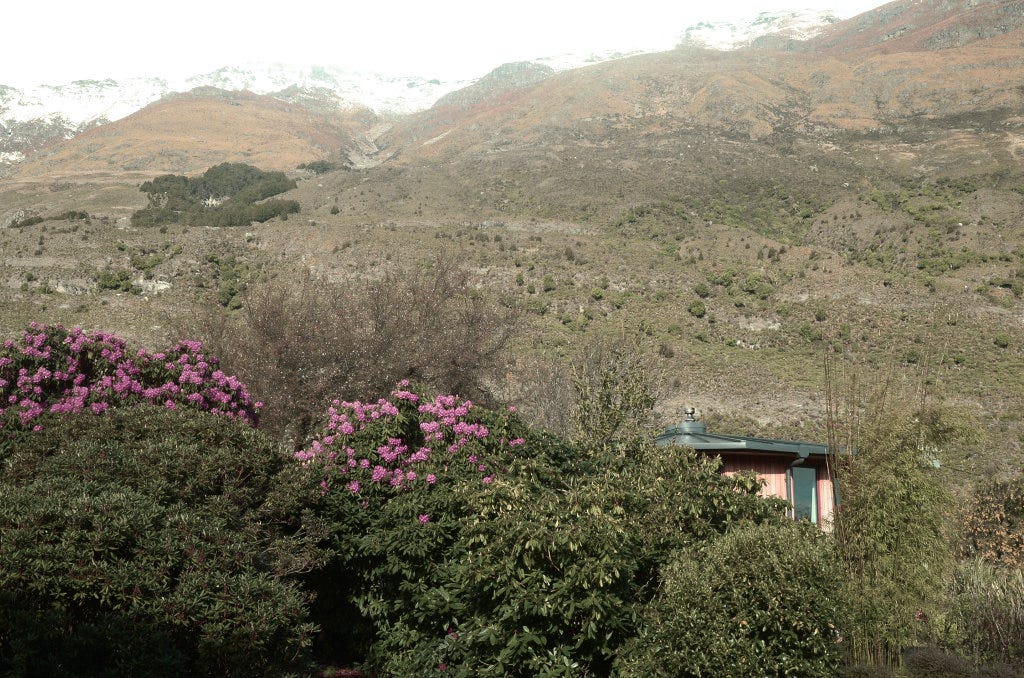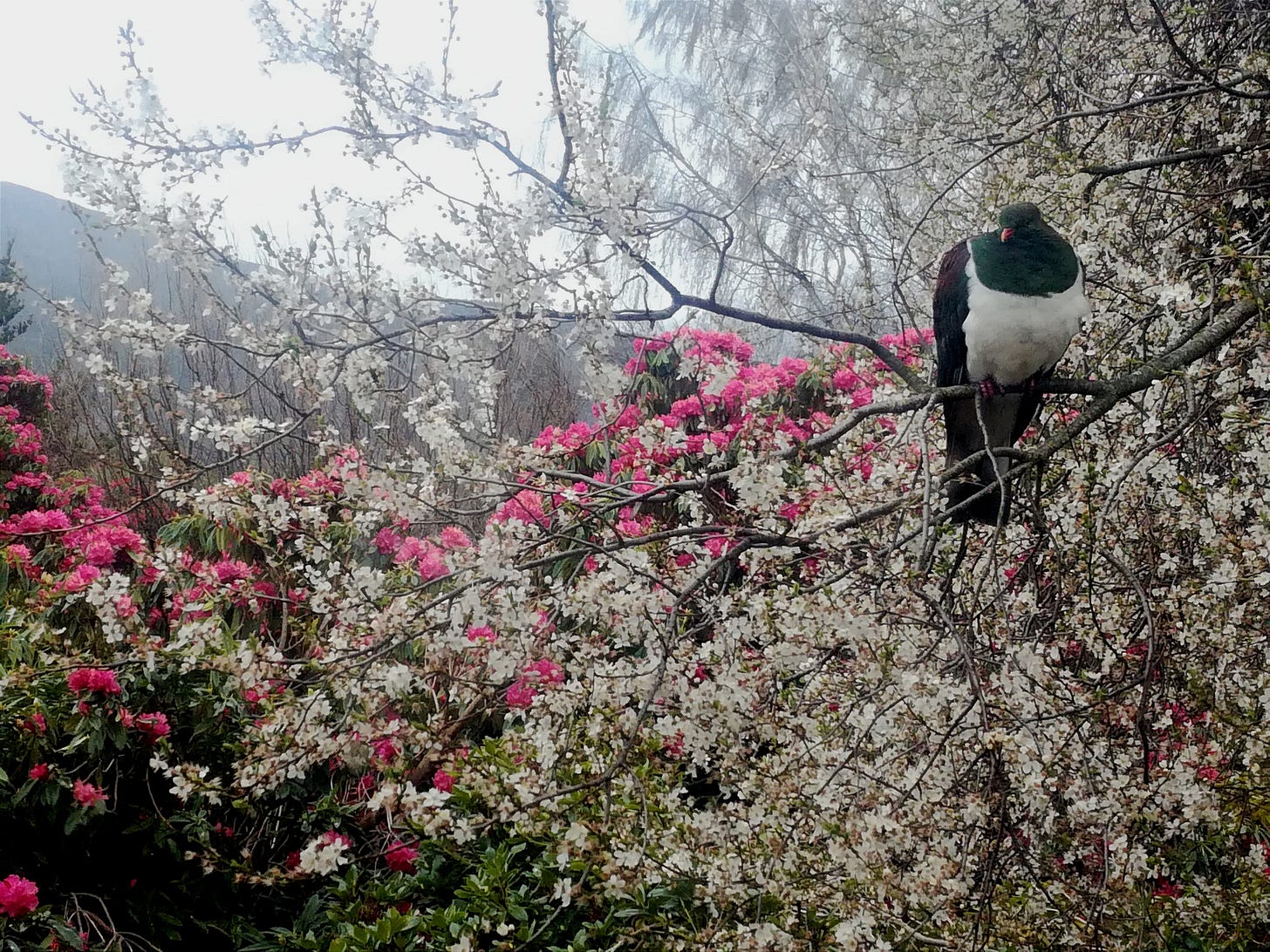Borrowed Scenery
Shakkei 借景 The art of 'capturing alive'
The world is one, a seamless whole, for those who can see it, for those who can learn to observe, to regard, to understand. – Donald Richie (1924-2013)
When our two story round house featured on you tube channel; Living big in a tiny house, interestingly one of the most common asked questions or comments was our choice to put bedrooms on the bottom floor, living on top; according to many folk an uncustomary design choice, but so was building a round house and composting our poo.
This was a considered decision; not one based on real estate/resale value or design code, rather reverence for towering mountain landscapes, framed by a generous display of mature rhododendrons planted by our neighbour’s father, 50 years ago, a resplendent show of flower from late Winter well into Summer.

We refined our design to reflect, unique natural landscape features of our house site, at the time we didn’t realise in doing so, we were in fact; borrowing scenery, a design principle from East Asia.
The practice of borrowing scenery is based on four key categories as defined in Yuanye: yuanjie (distant borrowing, such as mountains or lakes), linjie (adjacent borrowing, including neighboring buildings or features), yangjie (upward borrowing, like clouds or stars), and fujie (downward borrowing, such as rocks or ponds). This principle is not limited to natural features; man-made structures like temples, pagodas, or city skylines can also serve as borrowed scenery, provided they are stable and enduring. For example, Mount Fuji is frequently incorporated into gardens in Tokyo, while Mount Hiei is a common feature in Kyoto’s gardens. - Source Wikipedia
Our local equivalent to Mount Fuji; Mount Turner, is incorporated into our design, borrowing neighbours rhododendrons in foreground, also seen from inside our living space.
We wanted to encapsulate the wonderful mixture, magnitude and beauty of remote forest wilderness, high mountains and beautiful river valleys that we are fortunate to call home. Appreciating the aliveness of ever changing seasonal landscapes, each window offers a differing composition & connection.
What we hadn’t considered were the bonus experiences of our design; Next to our deck, just above eye level, we watch house sparrows return to last years nest, a remarkable example of architecture, diligently re building, strand by strand with whatever favourable material they find in our garden, ( often easy pickings, from weeding piles) creating a burrow with many entrances, secured on branches of Grandmother plum.
What a privilege they trust us as their close neighbour.

Native Kereru also perch in Grandmother plum, located just so, keeping one eye on shenanigans within our living space, perched, often within arms length resting and digesting goodness from fresh regenerating spring tree growth, particularly Kowhai which they strip bare, yet grow back vigorously in a symbiotic cycle.
Kererū holds significant cultural and spiritual importance in Native lore, it’s presence holds deep connection to the spiritual world. One story recounting that the demigod Māui transformed into a Kererū when he journeyed to the underworld to find his parents, with the bird’s distinctive green-blue and white feathers said to represent his mother’s apron and belt. This connection imbues the bird with a sacred presence, and its appearance near homes can be interpreted as a meaningful sign.
Their presence close to our home during Winter through to Early Summer is very special, great-full for their guardianship over our family, in return for safe sanctuary food & water. Before they move on into the forest for Summer feasting.
These connections would likely have been lost or at least, not as interactive if we hadn’t placed our living space 5 metres up. Not only has it enhanced our living experience, it has been a valuable lesson; harmonising with the land, often requires re visioning conventional design.



